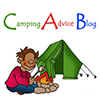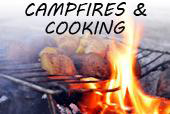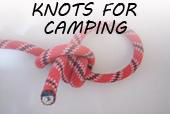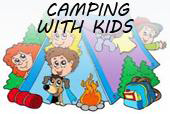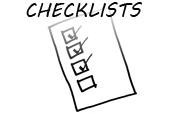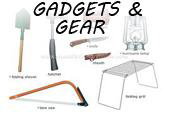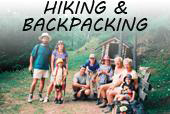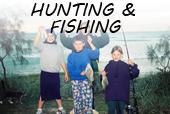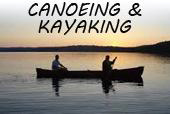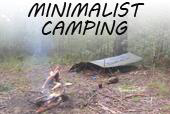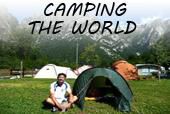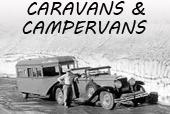TENT ADVICE – Camping Tent & Equipment Advice
Going camping is one of the best ways to enjoy the outdoors. Choosing a tent and buying camping equipment that is right for you is fun too, so make sure you know which camping tent is the best suited for you, whether it be a family tent, backpacking tent or group tent.
What type of tent do you need?
Choosing which of the many different designs and sizes of tents from the many available is a difficult task. To start narrowing down the options, we suggest listing your particular requirements. The first question has to be how many people is the tent for? If the tent is for solo use then you’re really looking for a tent weighing 1-2.5kg, which immediately eliminates well over half the tent models available. Most people share tents though, so this is where the greatest choice lie, with weights ranging from 1.75 to 5 kilos, the latter being a sensible upper weight limit for a tent that is being carried.
At the lower weight range, tent space will be at a minimum for two campers whilst the upper-end models of tents will take up to three or even four people in relative comfort. If your tent will be used mostly from the car with only the occasional venture into the wilds then weight isn’t so important. If you go backpacking regularly every gram counts, so an ultralight tent is vital. How much room you need depends on how tidy you are and how well you get on with your companions! Sharing small tents may be fine in the summer, but in winter when the nights are long and cold and often stormy a roomy tent makes camping far more enjoyable. The size of the porch is important too. In winter it needs to be large enough to store all your spare gear and have room for cooking too. In fact two porches are found on many winter or 4 season tents.
When and where you will use the tent should be taken into consideration too. Some designs (‘A’ pole, geodesic, well guyed tunnel or single hoop) perform much better than others in strong winds and so are more suited for exposed high levels sites. A necessity for the mountaineer but not for the canoe camper or cycle tourer. Not all tents are four season models. For winter use look for steep walls to shed snow but with some gradient to detract the force for the wind. More important in summer is to have insect netting doors on the inner tent, essential if you are going somewhere like the Scottish Highlands where midges are rampant.
How easy is the tent to pitch? For base camp use, this isn’t too important. If you are moving on everyday however you need a tent you can erect quickly, especially when it is wet and windy. Consider too, whether it is erected inside first or last – as inner tents ideally need to be kept dry. Finally ask yourself if you like the tent. This is important as you’ll be spending a lot of time in it. Choose a colour that appeal to you and a shape you find attractive. And when you get your new tent home take it out and check all the bits are there and then practice pitching it in the garden – the more you practice erecting your tent the more . You don’t want to arrive at your first camp site, when inevitably it will be dark and raining, to discover that you haven’t enough tent pegs and you don’t know which sleeve which pole goes in.
Tent Choice
From Wild Country, Terra Nova, The North Face, Vango, VauDe, MSR, Marmot, Mountain Equipment and more, it’s sometime difficult to choose the best tent for you. These manufacturers design their tents to the highest standards, materials and designs are tested to the limit and quality control is excellent. These are high quality, high performance tents with a guarantee of quality workmanship and materials. Personal requirements vary and priorities are highly individual, from a solo 1kg ultralight tent to a roomy base tent for two guilty gear hounds! Whatever your needs, you will find the ideal tent at Outdoor Pros.
Tent Design
Many and varied! Ridge or hoop tents, tunnel tents or geodesic tents, or a dome tent? Choice is very personal depending on your priorities for weight and space. A variety of factors contribute to the performance of the tent in tough conditions: How aerodynamic the tent is; the number and positioning of guy points; the number and configuration of the tent poles. Geodesic tent design is the strongest and so is often used as an expedition tent. It uses intersecting tent poles to produce a strong self-supporting structure with great internal volume. The interlocking tent poles easily handle snow load and since there is very little unsupported fabric, the tent has minimum ‘sail area’ to catch the wind.
Tunnel tents are sometimes preferred to dome tents as they offer a larger usable space for the area of the pitch that they use, as they have a good usable height along the middle line rather than a single peak as with dome tents.
Dome tents are often lightweight tents as they often use just two poles (or three including a porch pole) that cross at the apex of the tent. They use a simple tent pole structure as can be seen below, which is easily erected, making it a popular tent as a backpacking tent.
Family tents and group tents come in a variety of sizes and tent design. They are usually designed with the intent of being used as a base camp tent, where the tent is erected just once or twice for a single trip. This means that they can be bigger and heavier, but at the same time providing more practical and usable space for longer durations and more people.
All tents must be pitched correctly for optimum performance. Care in siting, e.g. tail to the wind or a sheltered place, can make a substantial difference.
Tent Materials
Most flysheets and groundsheets are made from a lightweight nylon fabric or, alternatively, a more durable lightweight polyester. For groundsheets, a slightly heavier fabric is used, since increased abrasion resistance is required. Ripstop nylon is reinforced with a fibrous mesh to prevent tearing.
Both flysheets and groundsheets are coated to make them completely waterproof. A variety of coatings are used. Polyurethane (PU) is probably the most common. Silicone elastomer, as used by The North Face, enables even lighter weight nylon to be used without sacrificing any of its strength. All these coatings are non breathable. Thus condensation may form on the inside of the flysheet. However, this can be reduced by good ventilation. Groundsheet protectors (footprints) are also available and help to protect the tent’s built in groundsheet from getting ripped or dirty.
Tent Repair and Care
It’s important to be prepared. If you’re looking to make an investment in a high quality tent, it’s important to make sure you take good care of it. Make sure you read the section above, but also consider buying tent repair kits and tent cleaner.
Tent Brands
Many camping equipment shops will sell a variety of tents to suit different people’s needs with some companies specialising in a particular range of tents such as lightweight tents, base camp / expedition tents or even group or family tents. Popular tent brands that are sold in many camping shops include Vaude Tents, MSR, Wild Country Tents, Vango, Mountain Equipment Tents, The North Face Tents, Wynnster and Aztec Tents.
